
Für eine deutsche Übersetzung dieser Seite einfach die Brandenburger Flagge anklicken
 |
Click the Brandenburg Flag for a German translation Für eine deutsche Übersetzung dieser Seite einfach die Brandenburger Flagge anklicken |


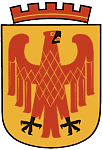 |
Home Towns - Potsdam, GermanyChurch of Peace |
 |



 |
This site is part of our Potsdam, Germany site. Click the left turn sign to get back to the
Potsdam Start Site.
 If you came here from our Vacation 2010 sites, click the green traffic light to return. |

|



|
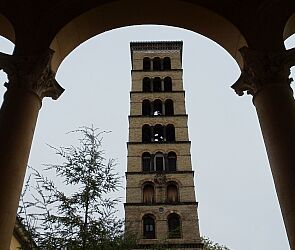
|
Potsdam's Church of Peace is situated at the outskirts of
Sanssouci Park. It was designed by court architect Ludwig Persius
with the close involvement of the artistically gifted King Frederick William IV.
After Persius' death in 1845, the design work was continued by Friedrich August Stüler
while the construction was led by Ferdinand von Arnim and
Ludwig Ferdinand Hesse. The design resembles a High Italian monastery. One of the original drafts bears similarities to an etching of the Basilica di San Clemente in Rome, made by early Christians and the free standing tower has its counterpart at the Basilica of Santa Maria in Cosmedin. The church was dedicated in September of 1848 but building work lasted until 1854. In front of the church, a pond was designed to mirror the entire assembly. It is called the Peace Pond. |
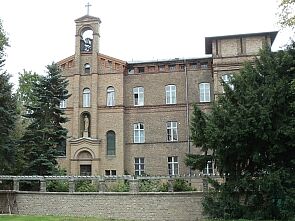 |
 |

|
| St. Joseph's hospital and the "Green Gate" - the entrance to Sanssouci Park - just outside the Church of Peace. |

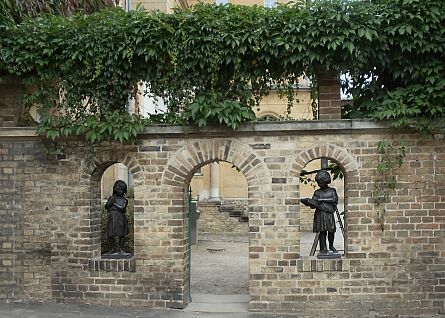 |

|

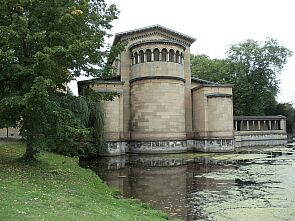 |
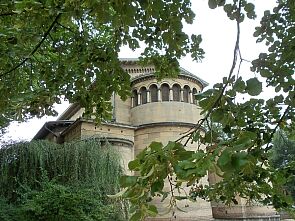 |

|

 |
 |
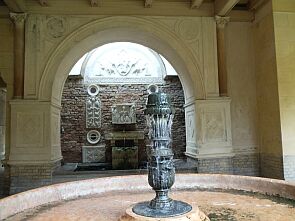
|
Almost everything in Potsdam is a copy of some larger original somewhere else in the world.
(see our International Architecture site for
examples from five continents.) In 1839, Danish sculptor Bertel Thorvaldsen created a marble statue of the resurrected Jesus Christ for the Church of our Lady in Copenhagen, Denmark. By many, this statue is considered the most perfect statue of Christ in the world and copies of it can be found all over the world, from the Temple Square in Salt Lake City to Legoland. One of the first copies was placed here in the church's atrium. |
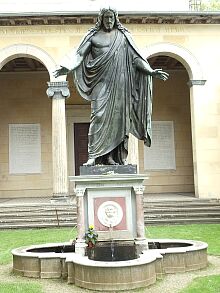 |
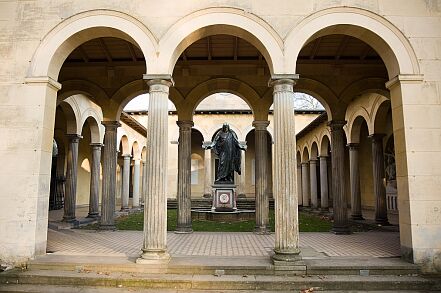 |
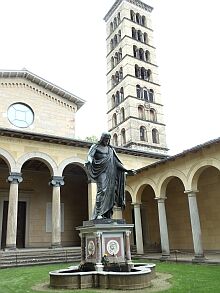
|
  Angel watching the king's tomb
Angel watching the king's tomb |
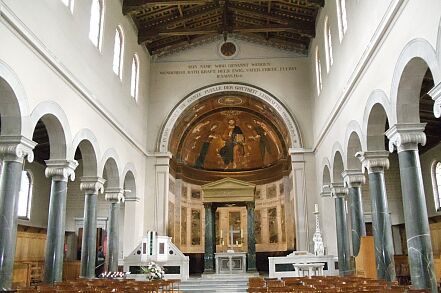 Venecian Mosaic above the altar
Venecian Mosaic above the altar |
 Chapel above the crypt
Chapel above the crypt
|

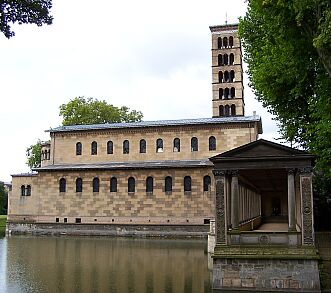 |
 |

|



|
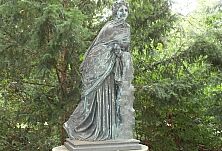 |
Behind the church is a small garden, called the Marly Garden. In the time of Soldier-King
Frederick William I, this was a fruit-
vegetable- and herb-garden for the king's kitchen, located around a little pleasure house, which the king called
Marly,
probably after the Chateau de Marly in Paris. As part of the church's construction, royal gardener Peter Joseph Lenné turned it into a small landscape park.  A small statue shows Queen Elisabeth Ludovika mourning the loss of her husband. Most of the garden is beautifully restored, but some parts seem to have remained untouched ever since the queen-widow walked these grounds. |
 |
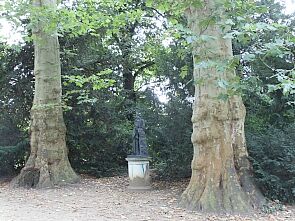 |

|

|



 |
This site is part of our Potsdam, Germany site. Click the left turn sign to get back to the
Potsdam Start Site.
 If you came here from our Vacation 2010 sites, click the green traffic light to return. |

|


 Back to Potsdam Page |
 Back to Home Towns |
 Back to Germany Page |
 Back to English Main Page |
 Back to Start Page |